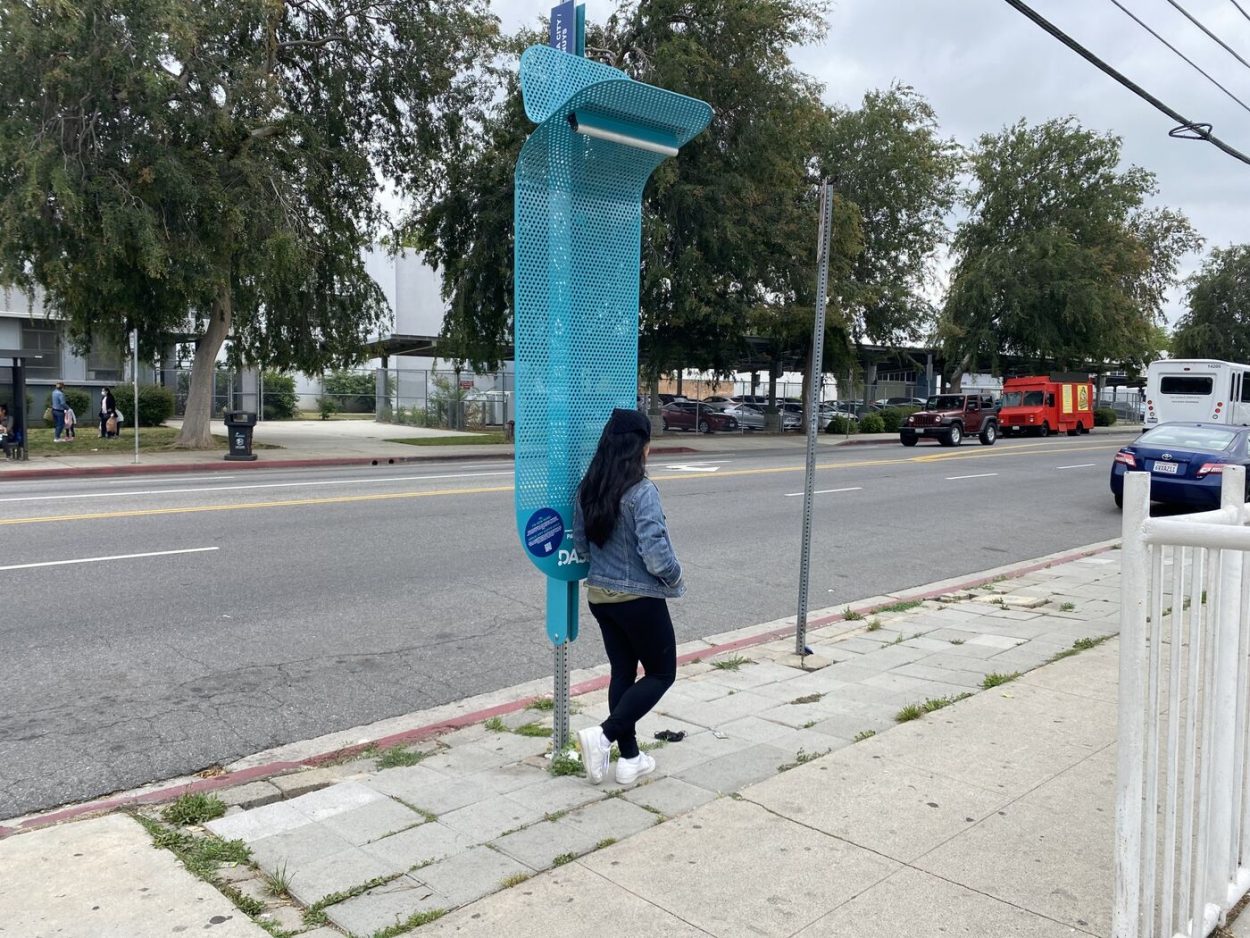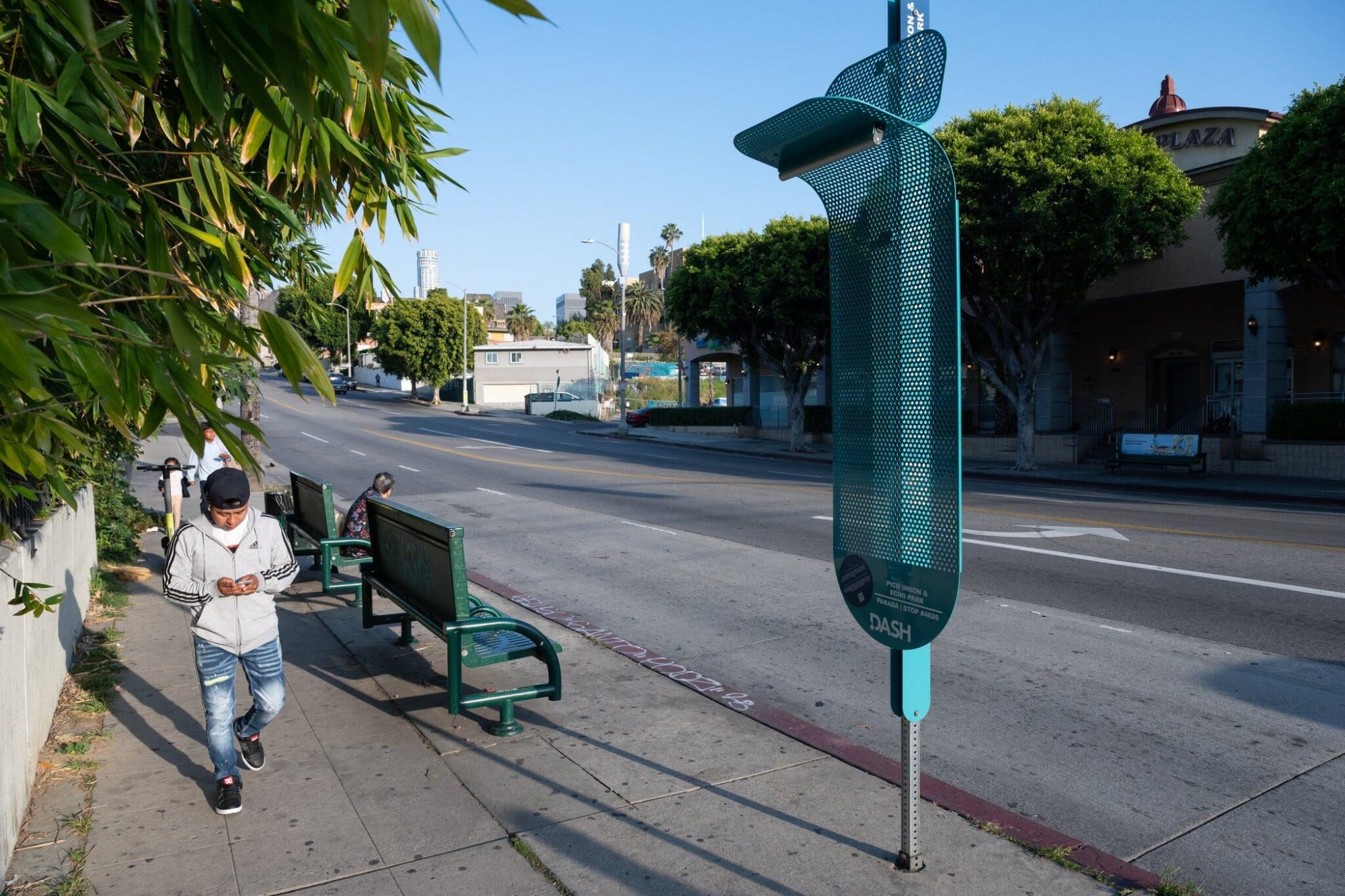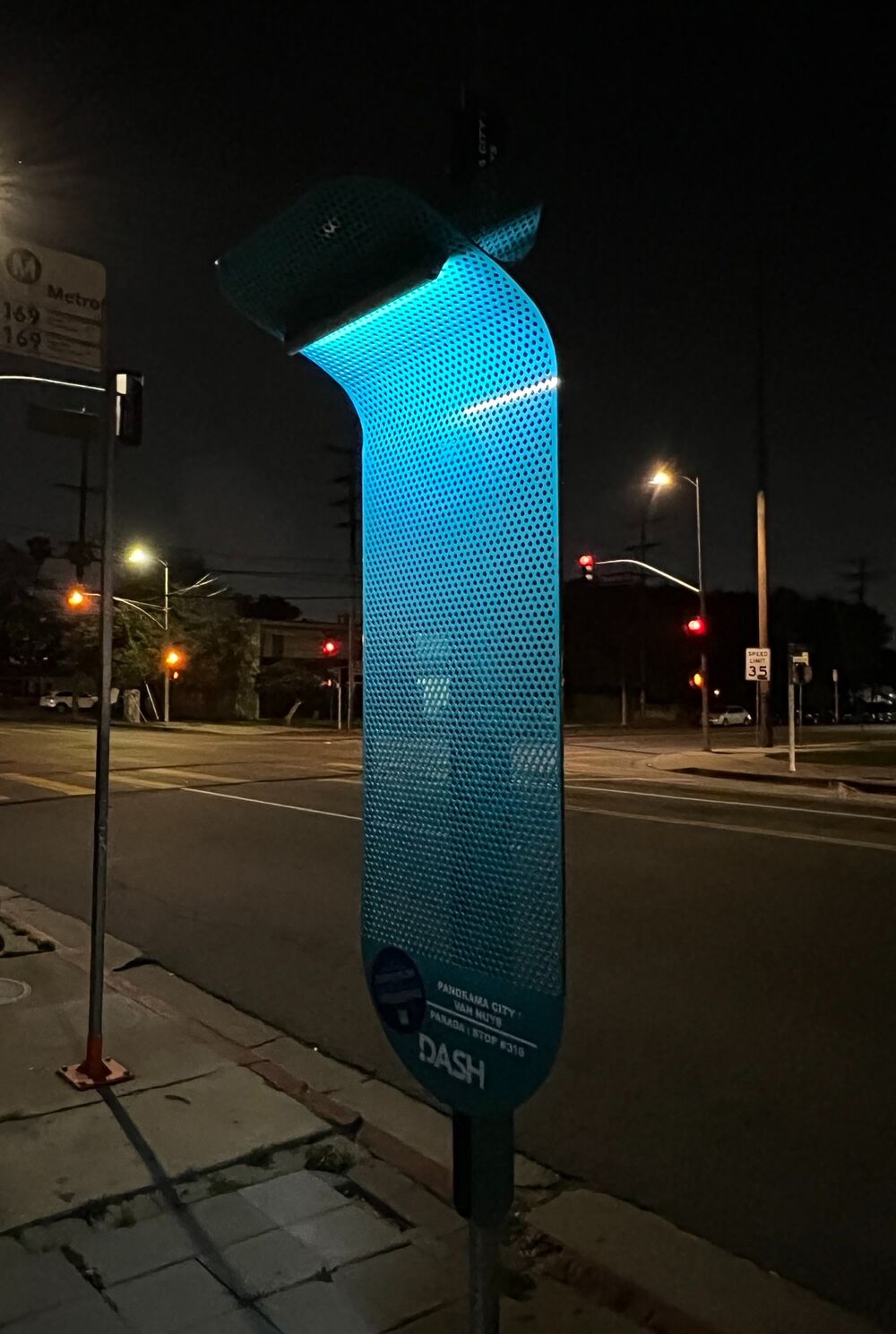Earlier this month, Los Angeles officials gathered at an unassuming bus stop in Westlake to debut a bus shelter pilot for underserved areas. Designed by L.A. Department of Transportation (LADOT) and the nonprofit Kounkuey Design Initiative (KDI), La Sombrita (“little shadow” in Spanish) is a perforated metal structure that attaches to existing bus stops to provide a sliver of shade from the California sun. At night, it becomes a solar-powered light. Its goal was to provide a small-scale fix to concerns residents often cite with the city’s nearly 6,000 bus stops, especially in working-class areas along streets too narrow for full shelters: a lack of adequate shade and light, which leads to dangerous and unsafe conditions.
According to Twitter users and a slate of critics, the 26-inch-wide shade seemed to epitomize government largesse, endless bureaucratic red tape, and clueless progressive wokeness. “It’s something even non-bus-riders and non-Angelenos should see as a symbol of our failures,” Aaron Gordon writes in Vice. “It’s about American cities erecting vast, complex bureaucracies with insanely complicated rules and norms that make it difficult to build literally anything.” The full-scale press conference for a “glorified pole” that critics likened to a Parks and Recreation sketch perhaps didn’t help optics, nor did comparisons to San Francisco’s outrageous $1.7 million public toilet. But there’s more to La Sombrita than meets the eye.
La Sombrita isn’t meant to replace bus shelters. Instead, it originated after a 2021 LADOT study, called “Changing Lanes,” delved into how public transit can be more equitable for women. Many urban transit systems were designed around nine-to-five commuters. Riding habits have changed over time, though, and women constituted a majority of L.A.’s bus riders pre-pandemic.
In neighborhoods with high amounts of women workers without cars, the report concludes, entire transit systems “fail to adequately account for women” and “prioritize men’s experience” by means of inefficient daytime routes and lengthy wait times. To address this, LADOT and KDI partnered to explore quick, small-scale solutions that adhere to entrenched policies—especially ones that require an onerous 16-step process involving eight city departments to install a single bus shelter, which can take years.
Using grant money from the Robert Wood Johnson Foundation, the design teams produced an array of shelter concepts. Among these were prototypes that can be easily installed on existing bus stop poles without additional permits. La Sombrita emerged from these early experiments. In that sense, it’s the outcome of agencies trying to bypass bureaucratic processes—not the outcome of bureaucracy itself. “Ultimately, we prototype something that demonstrates what the constraints are,” says Chelina Odbert, founding principal of KDI. The goal is to identify the greatest impact within mandatory parameters with the fewest resources. Whether or not it will move the needle remains to be seen.



